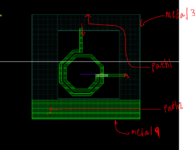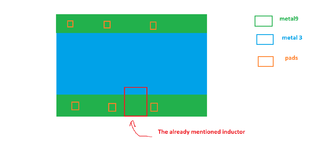omarelmorsy
Junior Member level 1
Hello,
I wanted to know if I have inductor as in image 1, and signal flow from the top to bottom of the inductor, what would be the direction of the return path of the signal ?
would the return path be in the reverse direction on metal 3 ground plane as in path 1 , or would it follow the least resistive path through metal 9 as in path 2 ?
It is worth mentioning that both the ground rail (metal 9) and the plane (metal 3) still extends to the end of the circuit.
Thank you.
I wanted to know if I have inductor as in image 1, and signal flow from the top to bottom of the inductor, what would be the direction of the return path of the signal ?
would the return path be in the reverse direction on metal 3 ground plane as in path 1 , or would it follow the least resistive path through metal 9 as in path 2 ?
It is worth mentioning that both the ground rail (metal 9) and the plane (metal 3) still extends to the end of the circuit.
Thank you.

